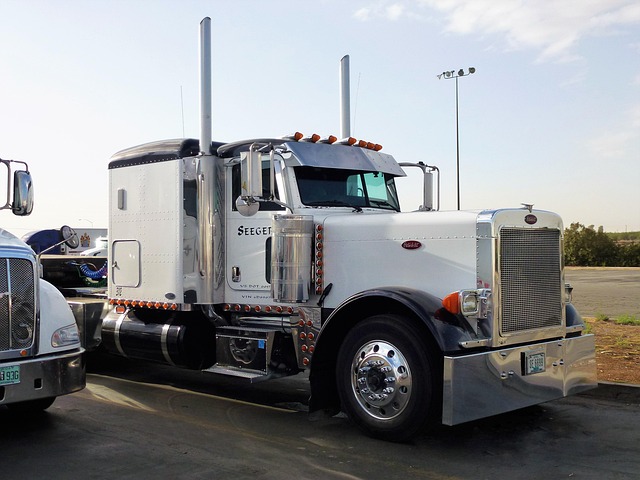Looking to register your car in California? This comprehensive guide walks you through the entire process, from understanding eligibility requirements to paying registration fees. We break down the essential steps, including gathering necessary documents and visiting the DMV, with tips on using a DMV VIN verifier for added convenience. By following these clear instructions, you’ll be on your way to ensuring your vehicle is legally registered in no time.
- Understand Eligibility Requirements for Car Registration in California
- Gather Necessary Documents for Car Registration
- Visit the DMV: The Steps to Register Your Vehicle
- Verify Vehicle Identification Number (VIN) Through DMV or Third-Party Services
- Pay Registration Fees and Receive Your Registration Certificate
Understand Eligibility Requirements for Car Registration in California

Before you begin the registration process for your car in California, it’s crucial to understand the eligibility requirements. To register with the Department of Motor Vehicles (DMV), your vehicle must meet certain criteria. One essential step is ensuring that the vehicle has a valid and accurate Vehicle Identification Number (VIN) verification. A DMV VIN verifier or even a mobile vin verifier can help establish this critical piece of information, as it’s unique to each car and provides details about its history and specifications.
Additionally, your car must pass an inspection to ensure it meets safety and environmental standards. This inspection, which could be conducted via a mobile vin inspection service, checks for emissions levels, lights, brakes, and other vital components. By fulfilling these requirements, you’ll be well on your way to registering your vehicle smoothly and efficiently in California.
Gather Necessary Documents for Car Registration

Before you start the registration process, make sure to gather all the essential documents required by the California Department of Motor Vehicles (DMV). This includes your vehicle’s registration certificate from the previous state, a completed application form for vehicle registration, and proof of insurance. It is also crucial to have your Vehicle Identification Number (VIN) verifier ready. You can obtain this through a mobile VIN inspection or use an online tool provided by the DMV to ensure the vehicle’s history is clean and free from any outstanding issues.
Additionally, you’ll need valid identification documents such as a driver’s license or state-issued ID card, along with proof of residency in California. These documents are necessary to verify your identity and establish your legal standing in the state. Remember, having accurate and up-to-date information is key to a smooth registration process, so take time to double-check each document before heading to the DMV or utilizing their online services.
Visit the DMV: The Steps to Register Your Vehicle

To begin the process of registering your vehicle in California, you’ll need to visit a local Department of Motor Vehicles (DMV) office. It’s recommended to make an appointment beforehand, as this can help reduce wait times significantly. Upon arrival, ensure you have all necessary documents, including proof of ownership, vehicle identification number (VIN) verifier details, and any required registration fees.
Inside the DMV, locate the section dedicated to vehicle registration. An agent will guide you through the steps, which typically involve filling out an application form, providing your vehicle’s details, and verifying the VIN using a mobile vin verifier or inspection tool. They’ll also check for any outstanding issues or recalls before issuing your registration documents.
Verify Vehicle Identification Number (VIN) Through DMV or Third-Party Services

Before proceeding with registration, it’s crucial to verify your vehicle’s Identification Number (VIN). This process ensures that your car matches the records and helps in preventing fraud. You can cross-reference the VIN through two primary methods. Firstly, visit the California DMV website and use their online VIN verifier. Alternatively, employ a mobile vin verifier or conduct a physical inspection by comparing it with the documents provided by the manufacturer.
A valid VIN inspection is essential for a smooth registration process. Ensure that your vehicle’s details match across all platforms to avoid any discrepancies. This simple step acts as a critical check in the entire car registration procedure, safeguarding against potential issues related to ownership and vehicle history.
Pay Registration Fees and Receive Your Registration Certificate

After completing your vehicle’s registration application at the DMV or online, the next step is to pay the registration fees. These fees vary based on the type and weight of your vehicle. Once your payment is processed, the DMV will issue a Registration Certificate (also known as a Reg Card). This certificate serves as proof that your car is legally registered in California.
It’s important to note that many Californians opt for a mobile vin inspection or mobile vin verification service to streamline this process. These services send a professional to inspect and verify your vehicle’s VIN (Vehicle Identification Number) at your convenience, ensuring accuracy and saving you a trip to the DMV.
Registering a car in California is a straightforward process once you understand the eligibility requirements, gather the necessary documents, and visit the DMV. Using a reliable dmv vin verifier can ensure your vehicle’s history is accurately checked. By following these steps and providing all required information, you’ll be on your way to receiving your registration certificate promptly.
